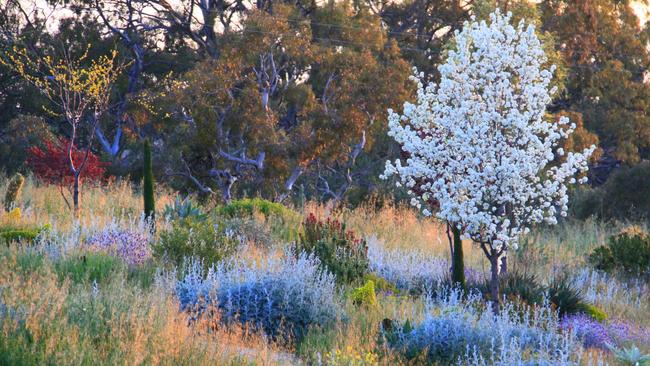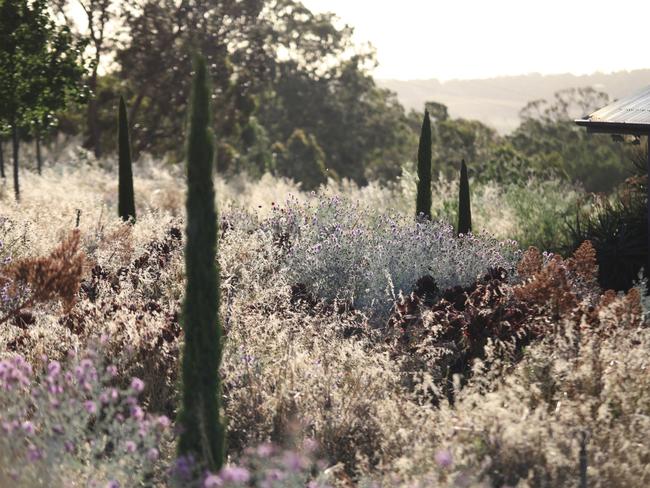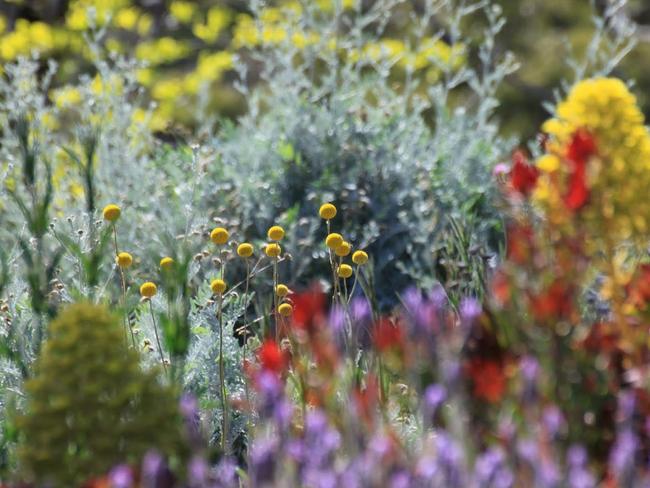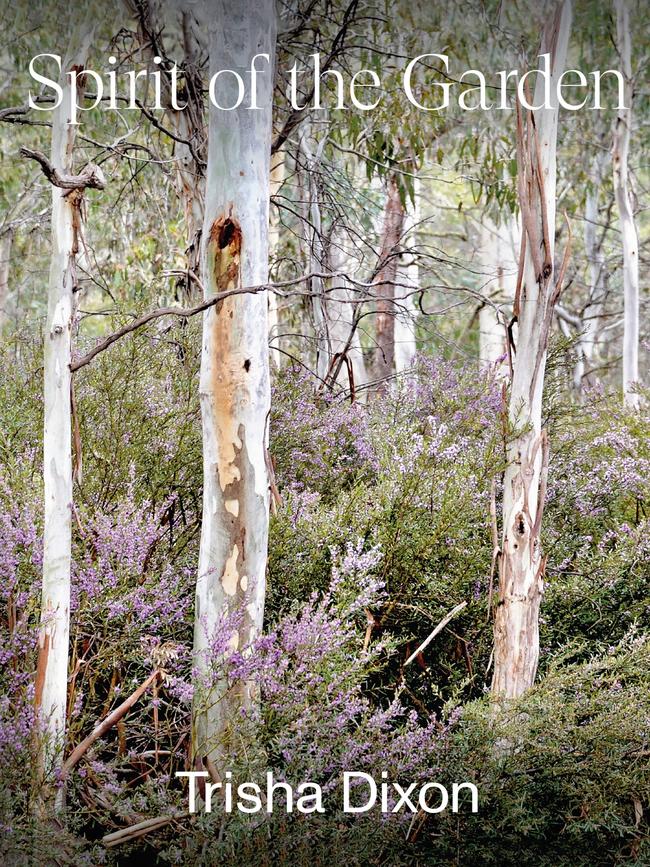Kurt Wilkinson’s garden, Yalamurra: where only the fittest survive
This difficult site — with thin, poor soil, salty bore water, strong winds and a punishing climate — requires outside-the-box thinking.

For a man who’s made a successful living from meticulously controlling plants, it’s surprising to hear from Kurt Wilkinson that his own garden is a bit wild and chaotic. Describing himself as a self-taught greenscaper, the 48-year-old created his garden Yalamurra, in the Adelaide Hills near Humbug Scrub, from scratch. The 4ha block, bought in 2011, has thin, poor soil, salty bore water, strong winds and a punishingly hot, dry climate; Wilkinson admits that in hindsight, it probably wasn’t the ideal choice for a gardener. He continues to refine his plantings in the 0.8ha garden as it imposes its own harsh lessons.
“I’m a professional plant killer,” he laughs. “I’ve tried so many plants I’ve lost count. The garden is now purely the survivors and I’ve learnt to be creative with them.” In doing so he has forged a new path, personally and professionally, which is the antithesis of where he started.
“I was all about formal gardens, pretty much in green and white,” Wilkinson says. He gained a reputation over 20 years as the leading hedger and topiarist in Adelaide, his skills in demand for top-end gardens. “Then I transitioned to block planting, then scatter planting and blending. Now my style is extremely loose and I keep pushing to see things I haven’t seen before.” He describes his garden as “an unusual blend of chaos with a few formal elements”.

“It’s all about light and texture and seasonality,” he explains. “I want to accentuate each single element and enjoy the ever-changing moments as plants move through their life cycles.” This is the man who used to specialise in keeping formal gardens exactly the same, all year. Now he claims he does almost no maintenance in his own garden, except to control weeds in paths.
His taste in plants has also flipped, by necessity. He used to hate succulents but learnt to love them. When the Aeonium cuttings he “shoved in” proved successful, he kept them for their green and red/black foliage but cut off their yellow flowers. He didn’t like yellow. Now he is thrilled by the contrast and drama of their tall, pyramid blooms and lauds their year-round performance. When ornamental grasses struggled, he turned to the paddock grasses for their light-catching seed plumes instead. He loves self-seeders and digs things up off roadsides to trial. “Anything goes,” he says. “Some things will be horrible but some turn out a million times better than I thought.”

He took to a few remnant, straggly native hibiscus (Alyogyne huegelii) and “butchered” them as an experiment, turning them into fat green domes that form the matrix of the garden along with paperbark (Melaleuca nesophila) and pencil pines (Cupressus sempervirens ‘Glauca’). The plants he calls his “plodders” include French lavender, dusty miller (Centaurea gymnocarpa), scabiosas, euphorbias and aloes.
Wilkinson is still experimenting, planting cuttings of trial plants in winter when there’s natural moisture in the soil. His favourite season is late summer into autumn when the plants that peaked in October “gradually decay”. “The subtlety of it is an acquired taste,” he says.
Q&A
I’ve been harvesting purple eggplants for several months but my current crop, grown under shadecloth, are turning yellow as they mature. The plants look healthy.
Katherine, Broken Hill, NSW
This phenomenon is not uncommon. Sudden and/or extreme heat is most likely if direct sun exposure is ruled out. Some purple cultivars turn yellow when fruits are fully or over-mature; the seeds will be large and fruit can be bitter. Also, it might be the plants randomly expressing traits of older varieties in their parentage.
What small flowering gums would survive one street back from the south coast of Victoria?
Pierre Prentice, by email
The various cultivars of dwarf, grafted hybrid Corymbia such as ‘Summer Red’, ‘Wildfire’ and ‘Baby Orange’ all tolerate coastal conditions. E. olivacea ‘Summer Scentsation’ is frontline coastal. Also with showy flowers are illyarrie (Eucalyptus erythrocorys), bell-fruited mallee (E. preissiana), fuchsia gum (E. forrestiana) and E. leucoxylon ‘Rosea’ and ‘Euky Dwarf’.
A dear friend died recently. She was a keen gardener; what small plant could I give instead of flowers to her husband in her memory? Flowering near her November birthday would be lovely. It needs to be hardy as he is not really a gardener.
Carey Nolan, Sydney
The responsibility of keeping a memorial plant alive can be stressful to non-gardeners and not all small plants are long-lived. I’d suggest a peace lily for indoors or a shady veranda, with advice not to overwater it. Alternatively, make a donation in her name to the Royal Botanic Garden Sydney, Landcare NSW or Rainforest Rescue.

Send questions to: helenyoungtwig@gmail.com or Helen Young, PO Box 3098, Willoughby North, NSW 2068. Website: helenyoung.com.au. The best question for April wins two signed copies of Trisha Dixon’s new book Spirit of the Garden (NLA Publishing, $65), which explores the relationship between ourselves, our gardens and the natural landscape.




To join the conversation, please log in. Don't have an account? Register
Join the conversation, you are commenting as Logout